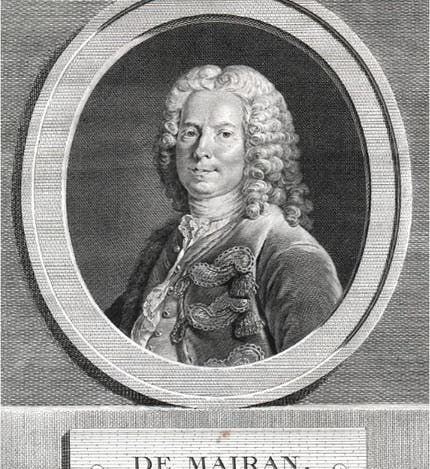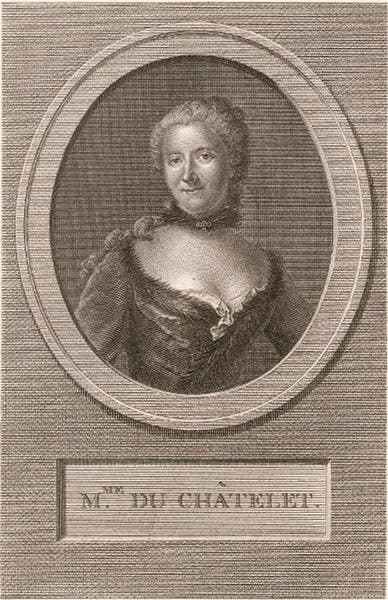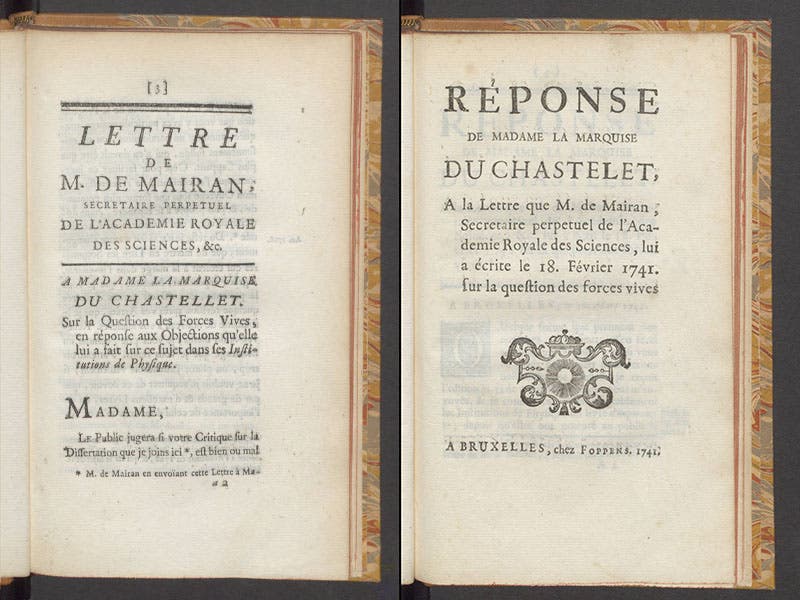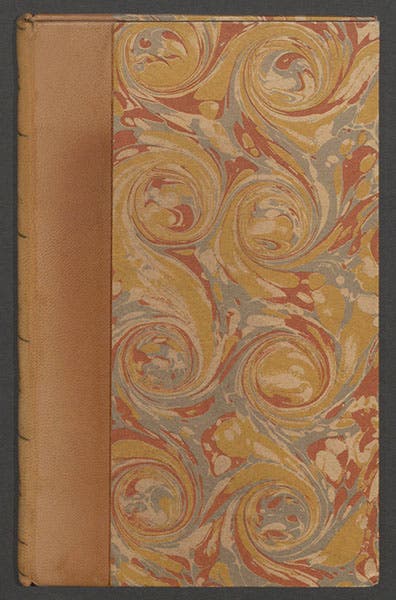Scientist of the Day - Jean-Jacques d’Ortous de Mairan
Jean-Jacques d'Ortous de Mairan, a French mathematician, was born Nov. 26, 1678. In 1728, Mairan published a paper, "Dissertation on the motive force of bodies," in which he attempted to resolve the so-called "vis viva" controversy in favor of his countryman René Descartes. Descartes had proposed that the force exerted by a body is determined by the body's mass times its velocity, or mv. The German philosopher Gottfried Leibniz later proposed a different measure, mv2, which he called vis viva, or living force. In one sense, both philosophers were correct, since we now recognize mv as a measure of momentum, and mv2 as a measure of energy. But the distinction was not understood in the 18th century, and it was thought that force had to be one or the other. Mairan (and most other French physical scientists) opted for mv.
But in 1740, a daring young French mathematician, Émilie du Châtelet, published her Institutions de physique and announced her presence to the masculine world of French mathematics. In the last part of her book, she attacked Mairan's 1728 paper and came down on the side of Leibniz and vis viva. Mairan's friends told him to let things be – the woman was a nonentity and would go away if ignored – but Mairan could not be silent, and in 1741 he published a brief letter in his own defense, attempting to put the upstart in her place. As it turned out, that was not such a good idea. First of all, since Mairan was a highly respected scientist, he immediately legitimized Mme du Châtelet and gave her a status in intellectual circles that she did not previously possess. What was worse (for Mairan), Mme du Châtelet immediately wrote a letter of her own in reply, refuting every one of Mairan's points and maintaining the superiority of Leibniz's vis viva.
When the dust had settled, and contemporaries had read pamphlet and counter-pamphlet, it was generally agreed that Mme du Châtelet had thoroughly bested the veteran scholar, and her career was off and running. She would complete a French translation of Newton's Principia in 1747, have an affair with Voltaire, and then die in childbirth in 1749 at the age of 42.
Mairan would live for twenty-two years after du Châtelet’s death, but he never recovered from the licking he took in 1741. We have all the works discussed here in our History of Science Collection, including Mairan’s very scarce 1741 Lettre … a Madame la Marquise du Chastellet and her immediate Réponse, bound together in a slim volume that innocently announces the arrival of one of the great intellects of 18th-century France.
Dr. William B. Ashworth, Jr., Consultant for the History of Science, Linda Hall Library and Associate Professor emeritus, Department of History, University of Missouri-Kansas City. Comments or corrections are welcome; please direct to ashworthw@umkc.edu.









